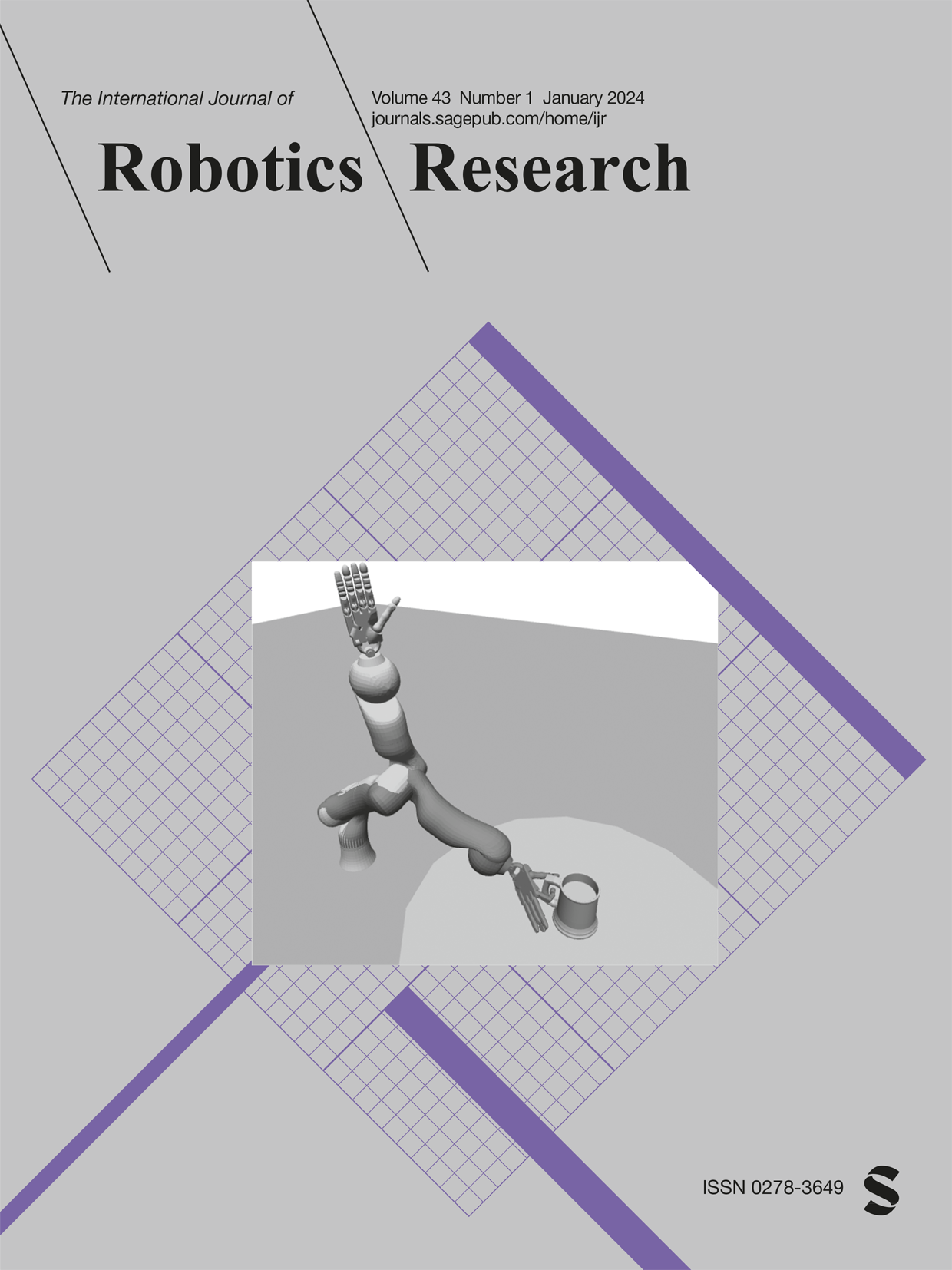Modal-graph 3D shape servoing of deformable objects with raw point clouds
IF 5
1区 计算机科学
Q1 ROBOTICS
引用次数: 0
Abstract
Deformable object manipulation (DOM) with point clouds has great potential as nonrigid 3D shapes can be measured without detecting and tracking image features. However, robotic shape control of deformable objects with point clouds is challenging due to: the unknown point correspondences and the noisy partial observability of raw point clouds; the modeling difficulties of the relationship between point clouds and robot motions. To tackle these challenges, this paper introduces a novel modal-graph framework for the model-free shape servoing of deformable objects with raw point clouds. Unlike the existing works studying the object’s geometry structure, we propose a modal graph to describe the low-frequency deformation structure of the DOM system, which is robust to the measurement irregularities. The modal graph enables us to directly extract low-dimensional deformation features from raw point clouds without extra processing of registrations, refinements, and occlusion removal. It also preserves the spatial structure of the DOM system to inverse the feature changes into robot motions. Moreover, as the framework is built with unknown physical and geometric object models, we design an adaptive robust controller to deform the object toward the desired shape while tackling the modeling uncertainties, noises, and disturbances online. The system is proved to be input-to-state stable (ISS) using Lyapunov-based methods. Extensive experiments are conducted to validate our method using linear, planar, tubular, and volumetric objects under different settings.具有原始点云的可变形物体的模态图三维形状伺服
基于点云的可变形对象操作(DOM)具有很大的潜力,可以在不检测和跟踪图像特征的情况下测量非刚性三维形状。然而,具有点云的可变形物体的机器人形状控制具有挑战性,因为:未知的点对应和原始点云的噪声部分可观测性;点云和机器人运动关系的建模难点。为了解决这些问题,本文引入了一种新的模态图框架,用于具有原始点云的可变形物体的无模型形状伺服。与现有研究对象几何结构的工作不同,我们提出了一种模态图来描述DOM系统的低频变形结构,该模态图对测量不规则性具有鲁棒性。模态图使我们能够直接从原始点云中提取低维变形特征,而无需额外处理配准,细化和遮挡去除。它还保留了DOM系统的空间结构,将特征变化逆化为机器人运动。此外,由于该框架是用未知的物理和几何对象模型构建的,我们设计了一个自适应鲁棒控制器,在处理建模不确定性、噪声和在线干扰的同时,将对象变形到所需的形状。利用基于李亚普诺夫的方法证明了该系统是输入到状态稳定的。广泛的实验进行了验证我们的方法使用线性,平面,管状和体积物体在不同的设置。
本文章由计算机程序翻译,如有差异,请以英文原文为准。
求助全文
约1分钟内获得全文
求助全文
来源期刊
CiteScore
22.20
自引率
0.00%
发文量
34
审稿时长
6-12 weeks
期刊介绍:
The International Journal of Robotics Research (IJRR) has been a leading peer-reviewed publication in the field for over two decades. It holds the distinction of being the first scholarly journal dedicated to robotics research.
IJRR presents cutting-edge and thought-provoking original research papers, articles, and reviews that delve into groundbreaking trends, technical advancements, and theoretical developments in robotics. Renowned scholars and practitioners contribute to its content, offering their expertise and insights. This journal covers a wide range of topics, going beyond narrow technical advancements to encompass various aspects of robotics.
The primary aim of IJRR is to publish work that has lasting value for the scientific and technological advancement of the field. Only original, robust, and practical research that can serve as a foundation for further progress is considered for publication. The focus is on producing content that will remain valuable and relevant over time.
In summary, IJRR stands as a prestigious publication that drives innovation and knowledge in robotics research.

 求助内容:
求助内容: 应助结果提醒方式:
应助结果提醒方式:


